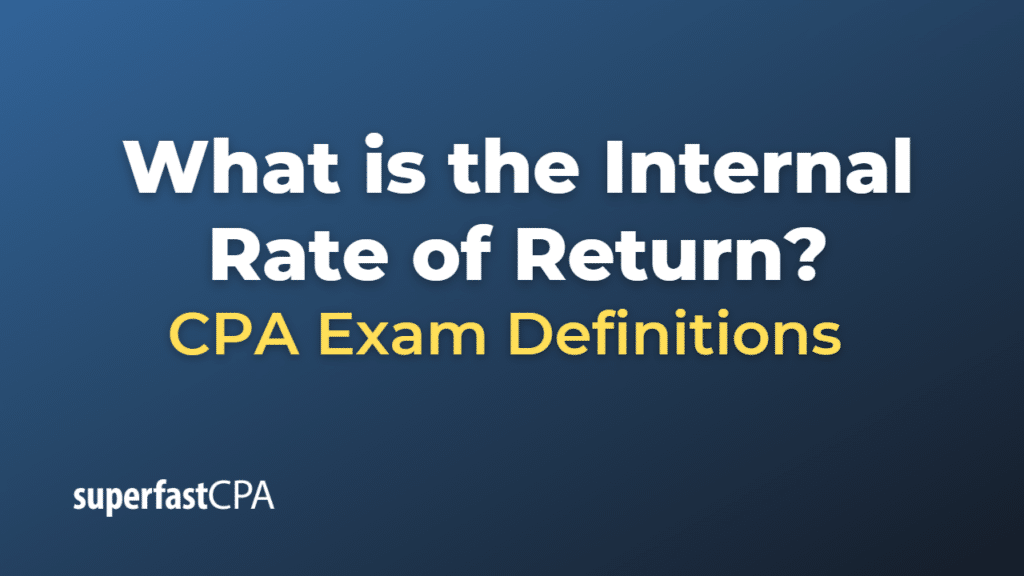Internal Rate of Return
The Internal Rate of Return (IRR) is a financial metric that is widely used in capital budgeting and corporate finance. It is a discount rate that makes the net present value (NPV) of all cash flows (both inflow and outflow) from a particular project or investment equal to zero.
In other words, IRR is the interest rate at which the cost of investing in a project would equal the benefits received from it when considering the time value of money.
It’s used to evaluate the attractiveness of a project or investment. If the IRR of a new project exceeds a company’s required rate of return, that project is desirable. If the IRR falls below the required rate of return, the project is not economically attractive.
It’s important to note that while IRR can be a useful tool, it has its limitations. For example, it assumes that all cash flows during the life of the project are reinvested at the IRR itself, which may not always be a practical assumption. It also may not give a clear picture when comparing projects of different size or timing of cash flows. Therefore, it’s often used in conjunction with other financial metrics when making investment decisions.
Example of Internal Rate of Return
Let’s say a company is considering an investment that will cost $1,000,000 and is expected to generate $250,000 per year for the next 5 years. The company wants to find the Internal Rate of Return (IRR) to help decide whether this investment is a good decision.
Here are the cash flows:
- Year 0 (today): -$1,000,000 (this is the investment, which is a cash outflow so it’s negative)
- Year 1: $250,000
- Year 2: $250,000
- Year 3: $250,000
- Year 4: $250,000
- Year 5: $250,000
The IRR is the discount rate that makes the net present value of these cash flows equal to zero.
Calculating the IRR typically involves complex financial calculations and is usually done using financial calculator or software such as Excel. In Excel, you can use the IRR function.
Based on the IRR formula in Excel, the IRR for this investment would be about 11.8%.
If the company’s required rate of return (also known as the hurdle rate) is 10%, this project’s IRR is higher, which means it’s a good investment for the company because the return it is expected to generate is greater than the return the company requires for such investments.
If the company’s required rate of return was 12%, the project would not be considered a good investment because the IRR is less than the required return.













